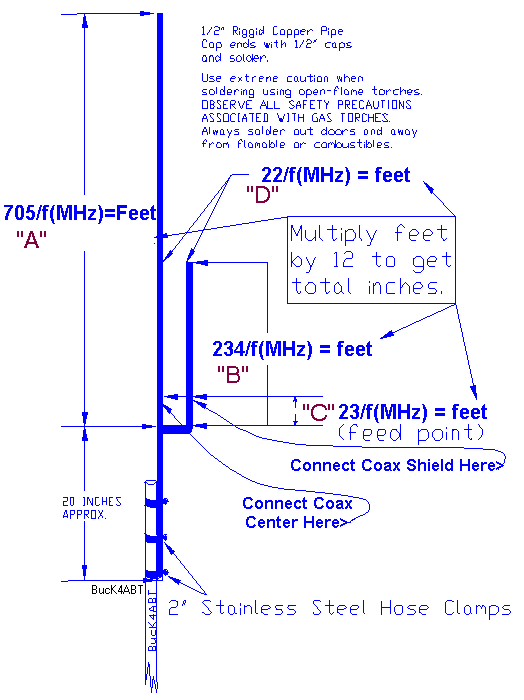Enter Desired Frequency
Calculated Dimensions
- Element A (longer):
- Element B (shorter):
- Spacing:
- Feedpoint (tap point):
J-Pole Antenna Diagram

Construction Notes
This calculator assumes a speed factor of ~0.98 for copper tubing. Adjust if using a different material.
Use a 1:1 choke balun (air core or ferrite) at the feedpoint to reduce feedline radiation.
